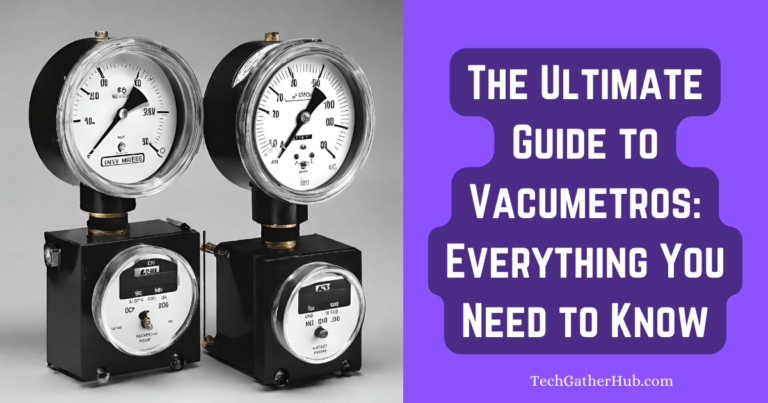
Vacuum gauges, often overlooked and underappreciated, play a pivotal role in a surprising number of industries and applications. From the DIY corner of your garage to the high-tech R&D labs, mastering the art of vacuum measurement can elevate your projects, save you time, and prevent undue wear and tear on your equipment. But for those new to the world of vacuum technology, understanding where to start can feel as daunting as the vast vacuum of space itself. Fear not, as this beginner’s guide is crafted to be the stepping stone into the world of vacuum gauges and all the beneficial discoveries they bring.
Understanding Vacuum Gauges
The Various Types of Vacuum Gauges
Not all vacuum gauges are created equal, and understanding this is the first step in harnessing their power. We will explore the basic classifications and their common uses:
Absolute Pressure Gauges
These gems measure the pressure within a vacuum relative to perfect vacuum pressure. They are often used in barometers and weather instruments.
Differential Pressure Gauges
Also referred to as pressure transmitters, these gauges contrast the pressure in one area with the pressure in another, essential for applications like airflow measurement in HVAC systems or monitoring filter conditions.
Pirani Gauges
Operating on the thermal conductivity of the gases surrounding a heated sensor, Pirani gauges are excellent tools for pressure measurement in the rough vacuum range.
Capacitance Manometers
Complex and precise, these gauges measure very low pressures by detecting the change in capacitance between a diaphragm and a stationary plate. Applications range from semiconductor manufacturing to refrigeration oil pressure monitoring.
How Vacuum Gauges Work
The Physics Behind the Measurement
Every vacuum gauge has a story to tell, and it’s rooted in physics. We’ll unpack the principles behind the mechanisms of the most common vacuum gauges:
Bourdon Tubes & Mechanical Designs
The Bourdon tube, an elegantly simple yet effective mechanism, is often the heart of traditional mechanical vacuum gauges.
Electrical and Digital Vacuum Gauges
For the tech enthusiasts, we’ll explain how capacitors, diaphragms, and sensitive electronic components translate pressure into electrical signals for our benefit.
Practical Applications
The Encompassing Reach of Vacuum Gauges
Vacuum gauges aren’t the sole domain of aerospace engineers and particle physicists. They are versatile tools that find their place in numerous applications:
Household Maintenance
From ensuring your refrigerator operates efficiently to diagnosing problems with your vehicle’s brake booster, a vacuum gauge can be a DIY’er’s best friend.
Crafting, Cooking, and Beyond
Artisans, chefs, and horticulturists use vacuum chambers and vacuum pumps to infuse flavors, speed up curing processes, and promote seed germination.
Choosing the Right Vacuum Gauge
Deciphering the Jargon and Navigating the Market
The right vacuum gauge for the job takes into account multiple factors:
Your Specific Needs
Are you working with high vacuum or rough vacuum? Do you need a portable gauge or one that can be fixed to a system permanently?
Your Budget
Understanding that accuracy often comes at a premium, we’ll discuss how to balance cost with quality.
Maintenance and Calibration
Keeping Your Gauge Running Smoothly
A vacuum gauge is only as good as its last calibration. We’ll touch on how to maintain the accuracy and extend the life of your investment:
Regular Checks
Learn how often you should check your gauge for calibration and perform any necessary adjustments.
Environmental Considerations
Vacuum systems operate in diverse conditions; we’ll discuss how extreme temperatures, pressure spikes, and the presence of certain gaseous substances can affect your gauge’s performance.
Conclusion
Vacuum gauges are not just tools; they’re windows into a universe of phenomena and processes that operate outside our everyday experience. By taking the time to understand how they work and why they’re important, you’ve already set yourself up for success. Remember, in the quest for knowledge, the only vacuum is the void of information where curiosity has yet to venture. Take the leap, explore the world of vacuum gauges, and see what new frontiers await in your own backyard. Happy vacuuming!